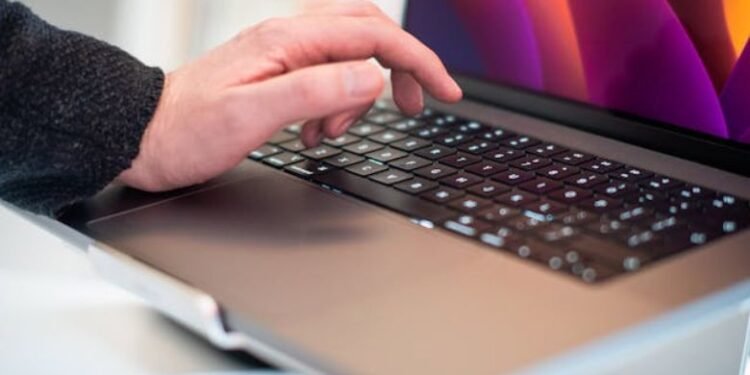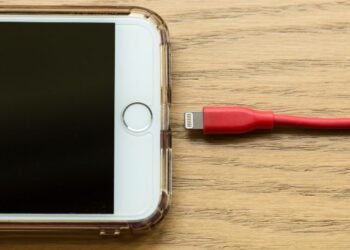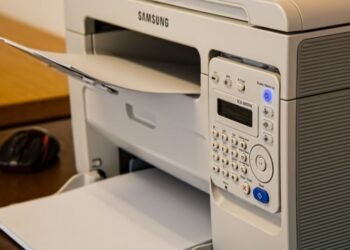Discover the complete guide to the Mac Keyboard with Touch ID: compatibility… features… buying advice and setup tips.
I’ll admit it…I’ve always been a bit of a keyboard nerd. I remember when I first swapped out my old wired keyboard for an external one for my Mac, using an Air keyboard case… expecting nothing more than a slightly quieter typing experience. But when I discovered the Mac Keyboard with Touch ID… something clicked…literally and figuratively. Suddenly logging in… approving Apple Pay… and switching between users felt faster… safer and just… cooler.
Over the past few weeks… I’ve spent hours testing it… pairing it with multiple Macs… and exploring every hidden feature Apple has built into this little gadget. In this guide… I’ll walk you through everything I learned: how the Mac Keyboard with Touch ID works… whether it will work with your Mac… hidden features… regional considerations… setup tips… and ultimately whether it’s worth your hard-earned money.
What is the Mac Keyboard with Touch ID?
The Mac Keyboard with Touch ID is Apple’s external Magic Keyboard model that includes a fingerprint sensor (Touch ID) integrated right into the keyboard. Instead of typing your password every time… you simply place your finger on the sensor… and your Mac unlocks instantly.
Key highlights:
- Two versions available: standard layout and extended layout with numeric keypad.
- USB-C charging in newer models (older versions used Lightning).
- Designed for Apple Silicon Macs (M1… M2… M3).
- Provides fast authentication for logins… Apple Pay… and secure user switching.
Many buyers assume that “Touch ID” works with any Mac. That’s a common misconception. Compatibility depends on your Mac’s chip… macOS version… and hardware security architecture.
How the Magic (Keyboard) Actually Works
When I first got my hands on the Mac Keyboard with Touch ID… I thought the fingerprint reader was just a convenient shortcut. But digging deeper… I realized it’s a tiny marvel of engineering.
Here’s what’s really happening under the hood:
- The keyboard does not store fingerprints locally. Instead… the sensor pairs with your Mac’s Secure Enclave… which securely stores your biometric data.
- Inside the keyboard… There’s a Public Key Accelerator (PKA) block that establishes a secure channel with the Secure Enclave.
- Communication between the keyboard and the Mac is encrypted using AES-GCM 256-bit encryption with ECDH key exchange.
- Because of this secure design… Touch ID works only with Apple Silicon Macs. If you try it with an Intel Mac… the keyboard functions as a regular keyboard… but the fingerprint sensor remains inactive.
This level of security ensures your biometric data is never transmitted insecurely. Even if someone intercepts the wireless signal… it’s useless without the Mac’s Secure Enclave.
Compatibility: Will This Keyboard Work for You?
Here’s a personal story. I plugged the Mac Keyboard with Touch ID into my older Intel MacBook Pro. I typed away happily for a while… then tried the fingerprint sensor. Nothing happened. At first… I panicked… thinking I’d bought a defective keyboard. But after researching… I realized it wasn’t a defect…it was a hardware limitation.
Compatibility Table
| Mac Type | Touch ID Function | Notes |
|---|---|---|
| Apple Silicon (M1/M2/M3) | Works | Requires macOS 11.4+ |
| Intel Macs | Doesn’t work | Keyboard functions normally |
If you live outside the US (like I do in Pakistan)… this makes double-checking your Mac model even more critical. You don’t want to pay for a feature that won’t work.
Features & Benefits
The Mac Keyboard with Touch ID offers several advantages that make it more than just a keyboard:
- Lightning-fast authentication: Log in or approve Apple Pay transactions in seconds.
- Enhanced security: Your fingerprints remain encrypted in the Secure Enclave.
- User switching: Quickly switch between accounts in shared environments using fingerprint recognition.
- Version choices: Standard layout for minimalists… extended layout with numeric keypad for power users and spreadsheet lovers.
- Sleek design and premium build: Lightweight… wireless… and rechargeable with long battery life.
- Future-proofing: Works with USB-C and Apple Silicon Macs… so it’s ready for upcoming macOS updates.
Anecdote: I’ve grown so accustomed to Touch ID that typing a password now feels like a chore. It’s that satisfying.
Pros & Cons
Pros:
- Seamless integration with the Apple ecosystem
- Faster authentication for logins and payments
- User-friendly and high-quality build
- Maintains resale value better than standard keyboards
Cons:
- Touch ID doesn’t work on Intel Macs
- Higher price point than standard keyboards
- Layout and regional variations can be confusing for international buyers
- If you rarely log in/unlock… some features may feel unnecessary
Buying Guide & Regional Tips (Especially for Pakistan)
Buying tech internationally comes with extra considerations. Here’s what I learned while researching:
- Version matters: Standard vs numeric keypad; USB-C vs older Lightning cables.
- Keyboard layout: US vs UK; check key labels carefully.
- Warranty: Imported Apple accessories may not have full local support…buy from an authorized reseller if possible.
- Cost vs benefit: For Intel Mac users… consider non-Touch ID versions to save money.
- Shipping and customs: Factor in international shipping fees and import duties.
- Future-proofing: If you plan to upgrade to Apple Silicon… the investment pays off.
- Resale value: The Touch ID versions tend to maintain higher resale value.
Setup & Usage Tips
Once you’ve got your Mac Keyboard with Touch ID… setup is straightforward:
- Connect the keyboard via the included cable and turn it on.
- Navigate to System Settings → Keyboard → Touch ID & Password to enroll your fingerprints.
- Disconnect the cable to use it wirelessly.
- A Mac can store pairings for up to five keyboards… but each keyboard pairs to only one Mac.
- Keep macOS updated to ensure smooth Touch ID operation.
- Check chip type… OS version… and layout if pairing issues occur.
Tip: I paired mine with two Macs… and the switching process was seamless…very handy if you multitask across devices.
Alternatives and When You Might Skip
- Apple Magic Keyboard without Touch ID – cheaper and still functional.
- Third-party keyboards with fingerprint sensors – limited macOS support; not as secure.
- MacBook built-in keyboard – perfect if you don’t need an external setup.
If you don’t need Touch ID or have an Intel Mac… a standard external keyboard may be the better option.
FAQs
Can I use this keyboard with my Intel Mac?
Yes… but Touch ID will not work. You’ll still get a high-quality typing experience.
How many fingerprints can I register?
Up to five fingerprints per user on Apple Silicon Macs.
Can it work with multiple Macs?
Each keyboard pairs with one Mac at a time. A Mac can store up to five keyboard pairings.
Does the keyboard require macOS updates for Touch ID?
Yes. For full functionality… ensure you’re running macOS 11.4 or later (depending on model).
Key Takings:
- The Mac Keyboard with Touch ID is more than just a keyboard…it’s a productivity and security upgrade.
- If you’re on Apple Silicon… it’s a no-brainer. Fast login… Apple Pay integration… user switching… and sleek design make it a worthwhile investment.
- If you’re on Intel… it still works as a keyboard… but you won’t get Touch ID functionality.
- In that case… you may want to wait or choose a non-Touch ID option.
- Personally… the upgrade transformed my workflow.
- Logging in is now a tiny ritual I genuinely enjoy… and the keyboard itself feels like a premium companion on my desk.
- If you value convenience… security and long-term Apple ecosystem benefits… the Mac Keyboard with Touch ID is an accessory that will pay off every day.
Additional Resources:
- Magic Keyboard with Touch ID for Mac models with Apple silicon (USB‑C) – Tech Specs: Official Apple page detailing specifications, compatibility, battery life and connection options for the Magic Keyboard with Touch ID.
- Apple Platform Security – Magic Keyboard with Touch ID: Explains how the Touch ID sensor works, including Secure Enclave integration, pairing and security features for your Mac.














